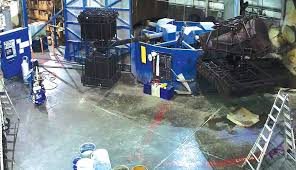Rotational molding, often known as rotomolding, is a flexible and effective manufacturing process utilized to produce hollow plastic products. This method is widely used to create a variety of items, from large vessels and tanks to intricate toys and automotive components. This is a complete description of the procedure, its advantages, and the uses.
The Rotational Molding Process
Rotational Molding involves heating a plastic material in a hollow mold before rotating the mold on multiple directions. The process starts with the inserting of a particular amount of plastic powder or liquid resin in the mould. It is shut and heated, usually by using an oven. The temperature increases and the plastic melts, and sticks to the mold’s internal surfaces.
The mold’s rotation ensures the plastic material evenly covers the entire interior surface, creating a uniform wall thickness. After heating the mold, it’s cooled, often using air or water which helps to solidify the plastic. Once the mold is cool, it is opened, and the final product is taken out. This process allows for intricate shapes and smooth finishes, often requiring little post-production work.
Advantages of Rotational Molding
Design Flexibility: Rotational molding is ideal to create intricate and complex designs that are expensive or difficult to create using other techniques. The process is able to produce components with different wall thicknesses, intricate geometries, as well as integrated features such as the handles or ribs.
Durability: Products made through rotomolding are known for their durability and strength. The even distribution of plastic within the mold results in a smooth, stress-free design which can stand up to the most demanding conditions.
Cost-Effectiveness: In comparison to other manufacturing processes like injection molding, the rotomolding process can be typically more affordable for the production of large, hollow parts, particularly in medium to low production runs. The molds employed in rotomolding tend to be less expensive and simpler to manufacture.
Materials Efficiency: The technique permits the use of various types of plastics, including polypropylene and polypropylene as well as nylon. Furthermore, since the plastic melts and is then cooled to a minimum, there is a minimal amount of in terms of waste, compared to other techniques.
Applications of Rotational Molding
Rotational molding is employed across various industries due to its versatility. In the industrial field it’s utilized to make large tanks for storage as well as chemical containers and playground equipment. In the automotive industry, rotomolding is used to create parts such as bumpers as well as panels. It’s also a common feature in consumer goods, including kayaks, coolers as well as outdoor furniture.
In summary the rotational molding technique is a durable and flexible manufacturing process that offers numerous advantages for producing high-quality, durable, and intricate plastic products. Its capability to deal with diverse styles and materials makes it a valuable process for a variety of consumer and industrial applications.


